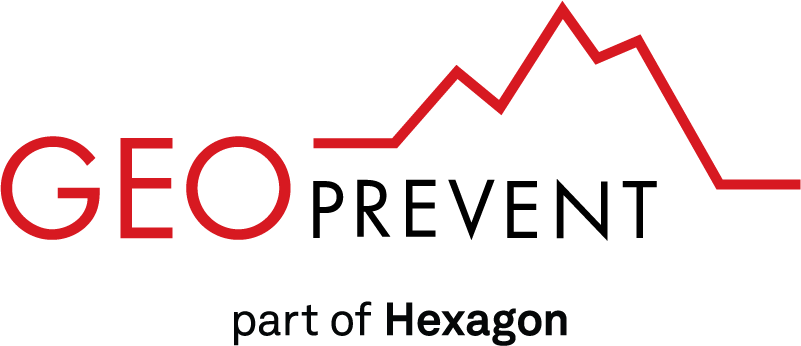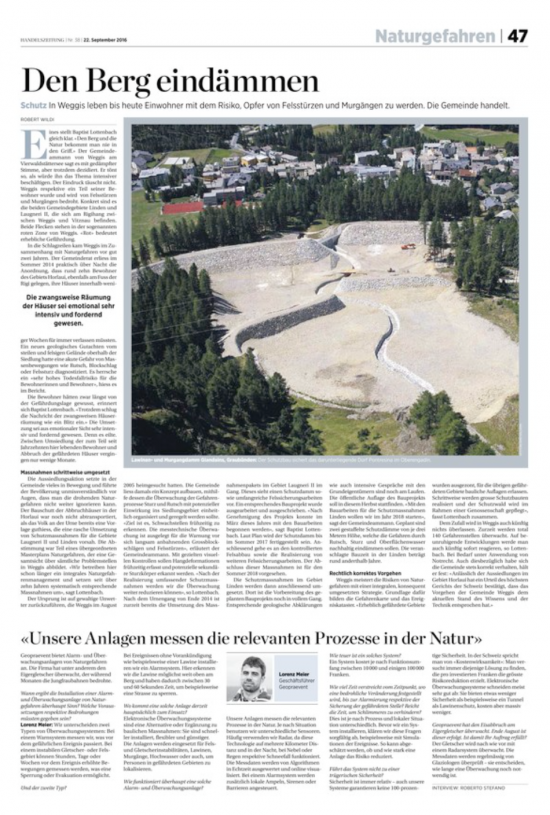Why electronic alarm and monitoring systems?
Why and when are electronic alarm and monitoring systems for natural hazards needed? The leading Swiss business newspaper Handelszeitung provided answers to this essential question in their edition on September 22, 2016. Geopraevent CEO Dr. Lorenz Meier explains why and when electronic alarm and monitoring systems make sense and elaborates on the use cases, benefits, costs and commented on criticism. The original interview in German can be found here. An English translation is published below. More on the mentioned Eiger project can be found here.
English translation of Handelszeitung extract, Special Natural Hazards, September 22, 2016:
«Our systems permanently monitor the relevant natural processes»
Geopraevent develops and operates alarm and monitoring systems for natural hazards. Among other applications, the company monitored the Eiger glacier which threatened the Jungfrau railway.
When does it make sense to install an alarm or monitoring system?
Lorenz Meier: We differentiate between two types of systems: with a monitoring system we measure what happens prior to an event. In case of a glacier or rock instability we see increased movements hours, days or even weeks prior to the ice avalanche. This leaves enough time to evacuate and close endangered areas.
And the second type?
In case of an event with no prior indications, for example a snow avalanche, we install an alarm system. The system detects the avalanche as early as possible and we usually have between 30 and 60 seconds to automatically close roads or railways.
What are the main applications of such systems?
Electronic alarm and monitoring systems can often complement or even replace structural measures – usually at lower costs and certainly with a weaker impact on the alpine scenery. In addition, they are installed fast, are flexible in their use and adjustable at any time. The systems are used for rock instabilities, avalanches, debris flows, floods and further to detect people in hazard zones.
How does such a system work?
All systems measure the relevant natural processes. Depending on the situation we use different sensors. We often use radars as this technology allows to detect movements in a distance of several kilometers and works day and night as well as during rain, snow fall and fog. The data is then processed with our algorithms in real-time and displayed on our online portal. In addition, our alarm systems automatically manage traffic lights, horns and barriers to alert and close roads or railways.
What are the costs of such a system?
Depending on the functionalities they can cost a few 10’000 to several 100’000 CHF.
How much time is there from the time of detecting a natural hazard to alerting? Is there enough time to prevent a disaster?
This depends on the process and local settings. Prior to installing a system we clarify those questions, for example with simulations of the event. We can then estimate if and how much we can reduce the risk.
Does the system not provide a feeling of delusive safety?
Safety is always relative – even our systems are not able to provide a 100 percent safety guarantee. In Switzerland we talk about «cost effectiveness»: one tries to find the solution which reduces the risk most per invested Swiss franc. Electronic systems are very effective: they provide slightly less safety than for example a tunnel but cost much less.
Geopraevent monitored the ice avalanche at the Eiger glacier. End of August, the avalanche took place. Is your work done?
We continue to monitor the glacier with our radar system. The data is regularly checked by glaciologists – they decide how long a monitoring is needed.
Interview: Roberto Stefano

